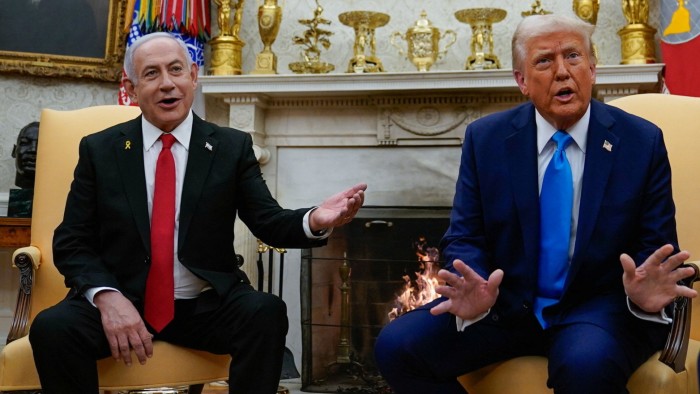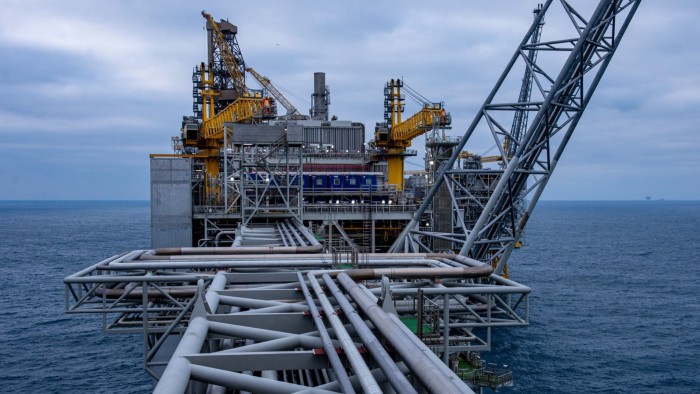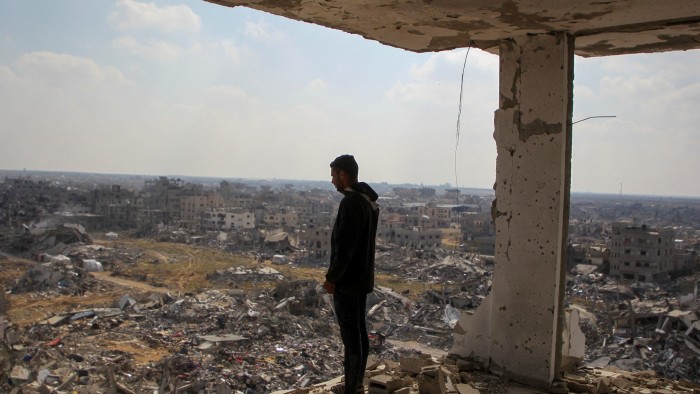
Unlock the White House Watch newsletter for free
Your guide to what the 2024 US election means for Washington and the world
Donald Trump has outdone himself. After a tumultuous return to the White House, the mercurial US president has unveiled arguably his most reckless plan to date. Having threatened to seize Greenland and the Panama Canal, Trump now has Gaza, the war-shattered Palestinian territory, in his sights. His proposal to move Gaza’s 2.2mn population elsewhere, with the US taking over the strip in a “long-term ownership position”, is as morally reprehensible as it is dangerous.
It would be easy to dismiss Trump’s comments as yet another performative statement. The plan is so preposterous that it is unlikely to ever see the light of day. But the very act of the president unveiling it before the global media, with the visiting Israeli prime minister, Benjamin Netanyahu, by his side, underlines the irresponsible way in which the world’s most powerful leader is conducting his foreign policy.
The self-proclaimed dealmaker seems to view the world as a giant bazaar in which everything is up for grabs to be used as bargaining chips, with little regard for the repercussions. This is not a game US allies across the globe can afford to let him play. It breeds fear and uncertainty, damaging Washington’s global standing and weakening its web of alliances.
An American takeover of Gaza would violate all international norms. Any US military action in the strip, which has been controlled by Hamas since 2007, would contradict Trump’s own promise to keep American troops out of combat zones in the Middle East. It would carry echoes of the disastrous 2003 invasion of Iraq, and derail any hopes Trump has of striking a grand bargain that would lead to Saudi Arabia normalising relations with Israel.
Forcible mass expulsion of Gazans would amount to ethnic cleansing. It would revive memories of 1948, when hundreds of thousands of Palestinians fled or were displaced during the war that accompanied Israel’s declaration of independence. Trump seems to think he can dump the Palestinians on Egypt and Jordan. But they, like other Arab states, have vehemently rejected the idea.
He spoke of turning Gaza — pulverised by more than a year of Israeli bombardment after Hamas’s horrific October 7, 2023 attack — into the “Riviera of the Middle East” in which “representatives from all over the world” could live. The idea that some Palestinians might live there too seemed only an afterthought. As in his first term, the US president appears unable to humanise Palestinians, instead viewing them as expendable pawns in a wider game.
If Trump can propose taking over Gaza, moreover, what next? Many will fear he could give Netanyahu’s far-right government the green light to annex the occupied West Bank. In his first term, he overturned decades of US policy by recognising Jerusalem — whose status is disputed — as Israel’s capital and the Jewish state’s claim to sovereignty over the occupied Golan Heights.
America’s Arab and western allies will hope that Trump’s performance on Tuesday was bluster — a cynical negotiating ploy in his quest to secure a deal between Saudi Arabia and Israel, while pressuring regional states to take responsibility for Hamas-controlled Gaza. But they cannot count on this assumption.
Trump has repeatedly pledged to bring peace to the Middle East. Peace for him appears to mean a deal between Israel and Saudi Arabia. He seems to ignore, however, that the road to Riyadh requires a peaceful resolution of the Arab-Israeli conflict. It cannot involve emptying Gaza of its people to build resorts on the strip’s Mediterranean coast.
title_words_as_hashtags




